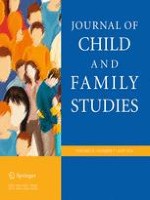01-07-2016 | Original Paper
Defining Child Maltreatment Among Lay People and Community Professionals: Exploring Consensus in Ratings of Severity
Gepubliceerd in: Journal of Child and Family Studies | Uitgave 7/2016
Log in om toegang te krijgenAbstract
The way in which laypeople and community professionals define child maltreatment in a family context is essential in decision-making on its referral and assessment. Despite differences found in the perspectives of the two groups, operating definitions are needed, which integrate them. The purpose of this work is to define types of maltreatment, integrating both perspectives (study 1) and to analyse the assessment of the severity of these practices (study 2). In study 1, a consensual qualitative research method was used to analyse 123 interviews of laypeople and 9 annual reports of social and health community services. A joint analysis of 1235 record units allowed us to obtain an integrated definition comprised of 6 types and 20 subtypes of maltreatment. In study 2, with the material gathered in study 1, a scale was created with 4 degrees of severity, based on the Maltreatment Classification System. Next, a sample of 159 interns, from health and social science areas with or without contact with situations of maltreatment, evaluated the severity of the items. An analysis of Kendall’s coefficient of concordance showed a lack of consensus in 9 of the 20 subtypes, with physical abuse and sexual abuse being the most consensual types, as opposed to psychological abuse and neglect. These studies underscore the importance of understanding this phenomenon at a community level, and suggest that public awareness may facilitate the referral of these practices, minimizing the over-reporting and under-reporting of cases, and encouraging early and preventive intervention.
